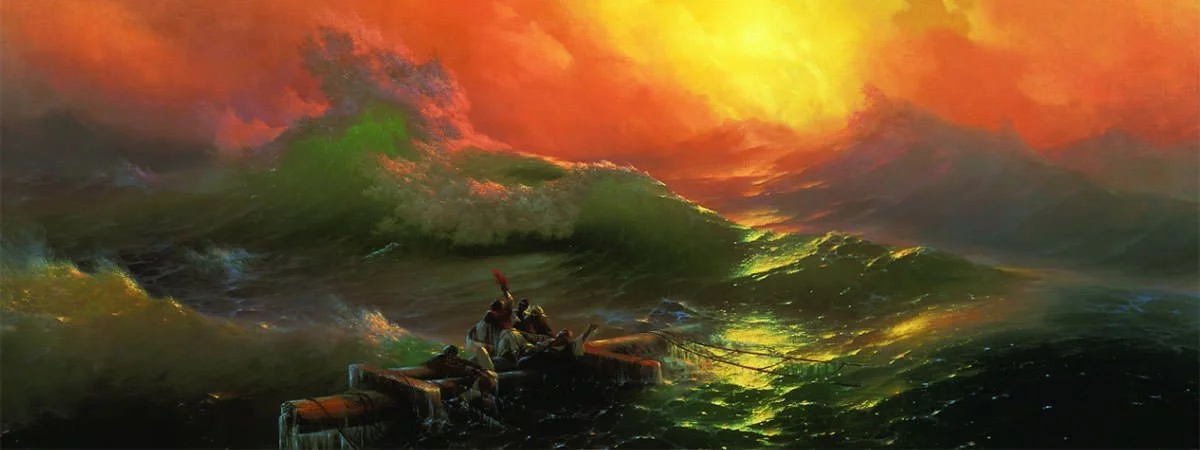In the 10th century, Russia converted to Christianity and its artists soon became masters of a form known as the icon. An icon is a devotional painting of Christ or another holy figure. The most famous Russian icon is Trinity by Andrei Rublev. Religious art dominated in Russia for many centuries and it was only in the 19th century that Russian artists broke this tradition. Realism was an art movement in which artists decided to portray, with uncompromising truth and accuracy, the people and situations of the present. It dominated the Russian art scene in the 19th century. Some of the best known Russian realist paintings are Morning in a Pine Forest, Golden Autumn and Barge Haulers on the Volga. The Russian avant-garde is a term used to define the large wave of modernist art that flourished in Russia from approximately 1890 to 1930. Among the most famous modern Russian paintings are Composition VII, I and the Village and The Black Square. Know more about Russian art through the 10 most famous paintings by Russian artists.
#10 Morning in a Pine Forest
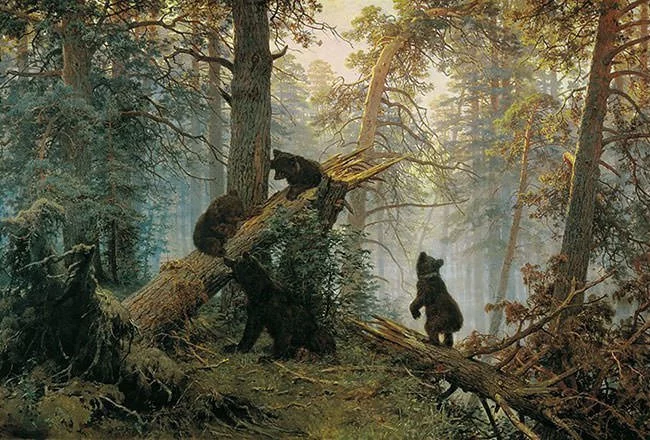
| Location: | The State Tretyakov Gallery, Moscow |
| Artist: | Ivan Shishkin |
| Year: | 1889 |
One of the most famous Russian landscape painters, Ivan Shishkin, used painting as a way to study the nature. Throughout his long, successful and prodigious career, he focused on the Russian landscape especially its native forests. Morning in a Pine Forest is the most famous work of Shishkin. Another famous Russian painter named Konstantin Savitsky painted the bears in the painting. However, the art collector Pavel Tretyakov effaced his signature and thus the painting is now credited solely to Shishkin. Morning in a Pine Forest became very popular and was reproduced on various items, including the “Clumsy Bear” chocolates. According to one poll, it is the second most popular painting in Russia.
#9 Barge Haulers on the Volga
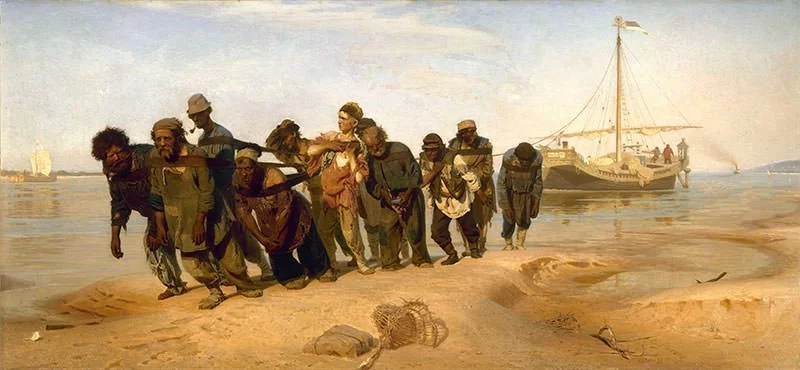
| Location: | State Russian Museum, St. Petersburg |
| Artist: | Ilya Repin |
| Year: | 1873 |
This painting depicts 11 laboring men dragging a barge on the Volga River. It is inspired by scenes witnessed by Ilya Repin while holidaying on the Volga in 1870. The characters portrayed are based on actual people whom the artist met while preparing the work. Barge Haulers won international praise for its realistic portrayal of the hardships endured by working class men. It launched the career of Ilya Repin and established him as a master of documenting social inequality. The painting was purchased by Grand Duke Vladimir Alexandrovich and exhibited widely throughout Europe as a landmark of Russian realist painting. Barge Haulers is the most renowned masterpiece of the most acclaimed Russian artist of the 19th century.
#8 Golden Autumn

| Location: | The State Tretyakov Gallery, Moscow |
| Artist: | Isaac Levitan |
| Year: | 1895 |
Isaac Levitan is now regarded as one of Russia’s most influential landscape artists. His choice of subject was dictated by mood, a central category in his personal aesthetics. He is thus credited for being the founder of what has been called the “mood landscape”. Fellow-artist Mikhail Nesterov defined Levitan’s approach to nature as: “Levitan has revealed the enormous beauty concealed in every Russian landscape, its soul and loveliness”. The motif of Russian autumn frequently appears in the works of Levitan and Golden Autumn is typical of his works as a whole. It is perhaps the most famous painting of the most renowned Russian landscape painter.
#7 I and the Village
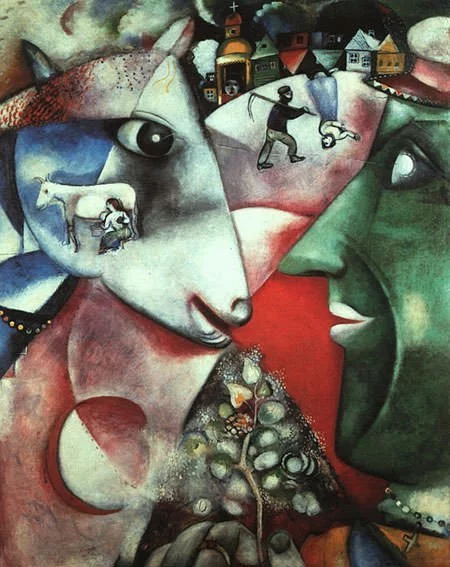
| Location: | Museum of Modern Art, New York City |
| Artist: | Marc Chagall |
| Year: | 1911 |
Created during the best phase of his career, this is one of the most famous works by Marc Chagall, one of the most influential modern artists. The painting is dominated by the image of a green-faced man and a goat staring at each other; and a glowing tree held in a hand. This is complemented by several scenes like that of a goat being milked and a collection of houses, some upside down. The painting consists of dreamlike images of Russian landscape and symbols from folk stories. As its title suggests, I and the Village is influenced by Chagall’s memories of his homeland and his relationship to it. The use of clearly defined elements with specific meaning like the Tree of Life, and the daringly whimsical style of the painting were considered ground breaking at the time.
#6 Farbstudie Quadrate

| English Title: | Color Study: Squares with Concentric Circles |
| Location: | Municipal Gallery in Lenbach House |
| Artist: | Wassily Kandinsky |
| Year: | 1913 |
Wassily Kandinsky is considered by many as the “Father of Abstract Art”. He was inspired by color and believed he could convey emotion through it without use of figures. He explored the emotional and expressionistic qualities of colors in many paintings. Also known simply as Concentric Circles, this painting is one of his most famous color studies and perhaps his most recognizable artwork. It plots out color combinations within concentric circular patterns arranged in an all over grid format. Farbstudie Quadrate can be seen as an organized investigation of perceptual effects of the interactions of colors and the emotional effect contrasting colors produce. It is one of the most famous paintings by perhaps the best known Russian artist.
#5 The Ninth Wave
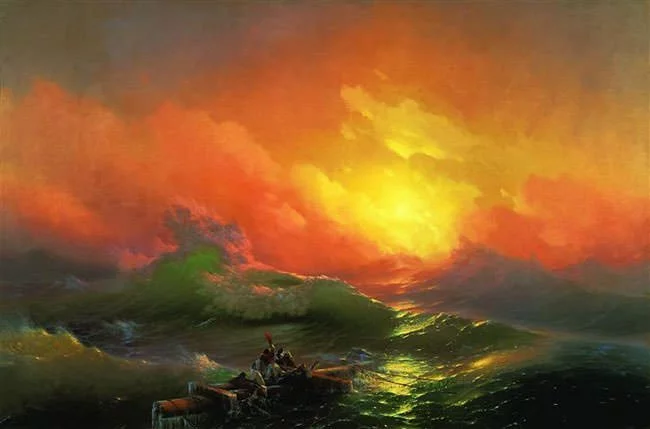
| Location: | State Russian Museum, St. Petersburg |
| Artist: | Ivan Aivazovsky |
| Year: | 1850 |
Ivan Aivazovsky was among the leading Russian artists of his time who also served as the main painter of the Russian Navy. He is also regarded as one of the greatest marine artists of all time. His most famous painting, The Ninth Wave, depicts the sea after a night storm and people facing death attempting to save themselves by clinging to debris from a wrecked ship. The debris, in the shape of the cross, appear to be a Christian metaphor for salvation from earthly sin. “The Ninth Wave” is an old expression used by sailors. It means “a single sea wave superior to all the others”. Some seamen believe that nothing can withstand the power of the ninth wave.
#4 La Mariée

| English Title: | The Bride |
| Location: | Private Collection |
| Artist: | Marc Chagall |
| Year: | 1950 |
Marc Chagall is perhaps the most famous Russian artist after Wassily Kandinsky. The striking quality of his works was his ability to attract the viewer’s attention and capture his imagination through colors. Such was his mastery that he portrayed striking images even while using just two or three colors; and this is evident in this renowned artwork. The bride is dressed in a lively red dress as compared to the soft blue and gray background which gives the impression that the woman is about to jump of the canvas and it is the viewer to whom she is being presented, and it is he who is the groom. La Mariee is the most famous painting of one of the most influential 20th century modern artists.
#3 Trinity
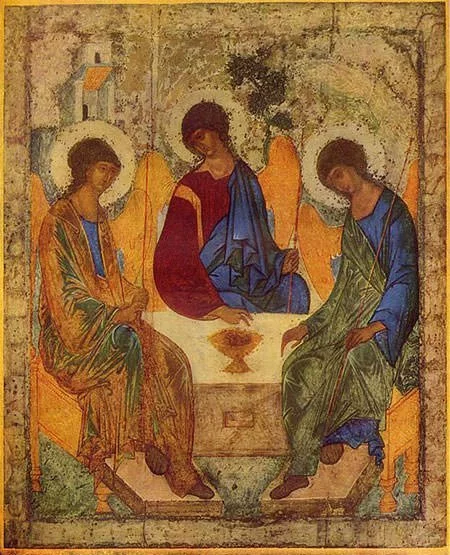
| Location: | Trinity Lavra of St. Sergius, Moscow |
| Artist: | Andrei Rublev |
| Year: | 1425 |
Andrei Rublev is considered one of the greatest medieval Russian artists and this is his most famous work. The Trinity is based on a story from the Book of Genesis also called The Hospitality of Abraham. In the story, Abraham is visited by three men who later reveal themselves to be angels. There are various interpretations of the concept of The Trinity but at that time it was generally believed that the three angels represented the Christian Trinity: “one God in three persons” – the Father; the Son Jesus Christ; and the Holy Spirit. Andrei Rublev’s painting was created in accordance with this concept. An icon is a devotional painting, typically executed on wood and used ceremonially in the Byzantine and other Eastern Churches. Andrei Rublev’s Trinity is the most famous of all Russian icons and it is regarded as one of the highest achievements of Russian art.
#2 Composition VII
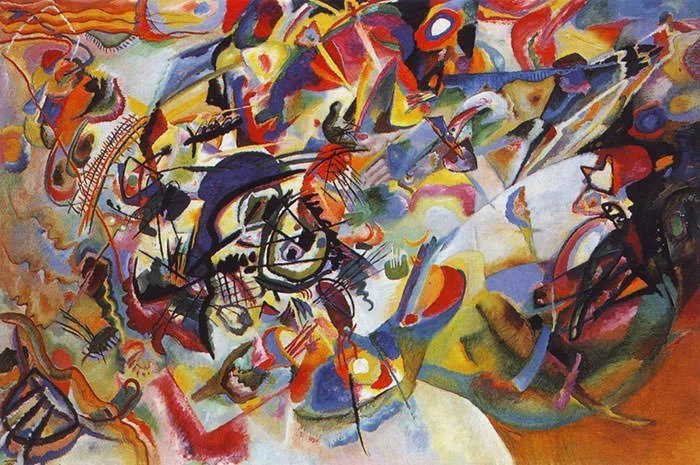
| Location: | The State Tretyakov Gallery, Moscow |
| Artist: | Wassily Kandinsky |
| Year: | 1913 |
Wassily Kandinsky painted some of the earliest abstract works including what is known as the First Abstract Watercolor. The years 1910 to 1914 are considered the peak of Kandinsky’s career and this painting is cited as the pinnacle of his artistic achievement during the period. He made more studies for this composition than for any other, though he painted the final version in just three days. Composition VII is believed to allude to the apocalyptic themes of Deluge, Last Judgement, Resurrection and Paradise. A swirling hurricane of colors and shapes, it was considered by Kandinsky to be the most complex piece he ever painted and it is one of the most renowned pieces of abstract art ever created.
#1 The Black Square
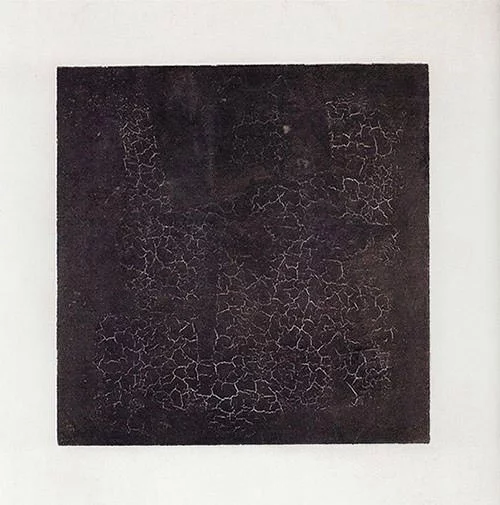
| Location: | The State Tretyakov Gallery, Moscow |
| Artist: | Kazimir Malevich |
| Year: | 1915 |
Kazimir Malevich was the founder of the art movement known as Suprematism, which focused on basic geometric forms, such as circles, squares, lines, and rectangles, and the use of limited range of colors. He is thus a pioneer of geometric abstract art. The Black Square is referred to as the “zero point of painting”, referring to the painting’s historical significance. The work is “monumental not for what Malevich put into pictorial space but for what he took out: bodily experience, the fundamental theme of Western art since the Renaissance”. The Black Square is considered an iconic work of abstract art and it is the most famous Russian painting of all time.

